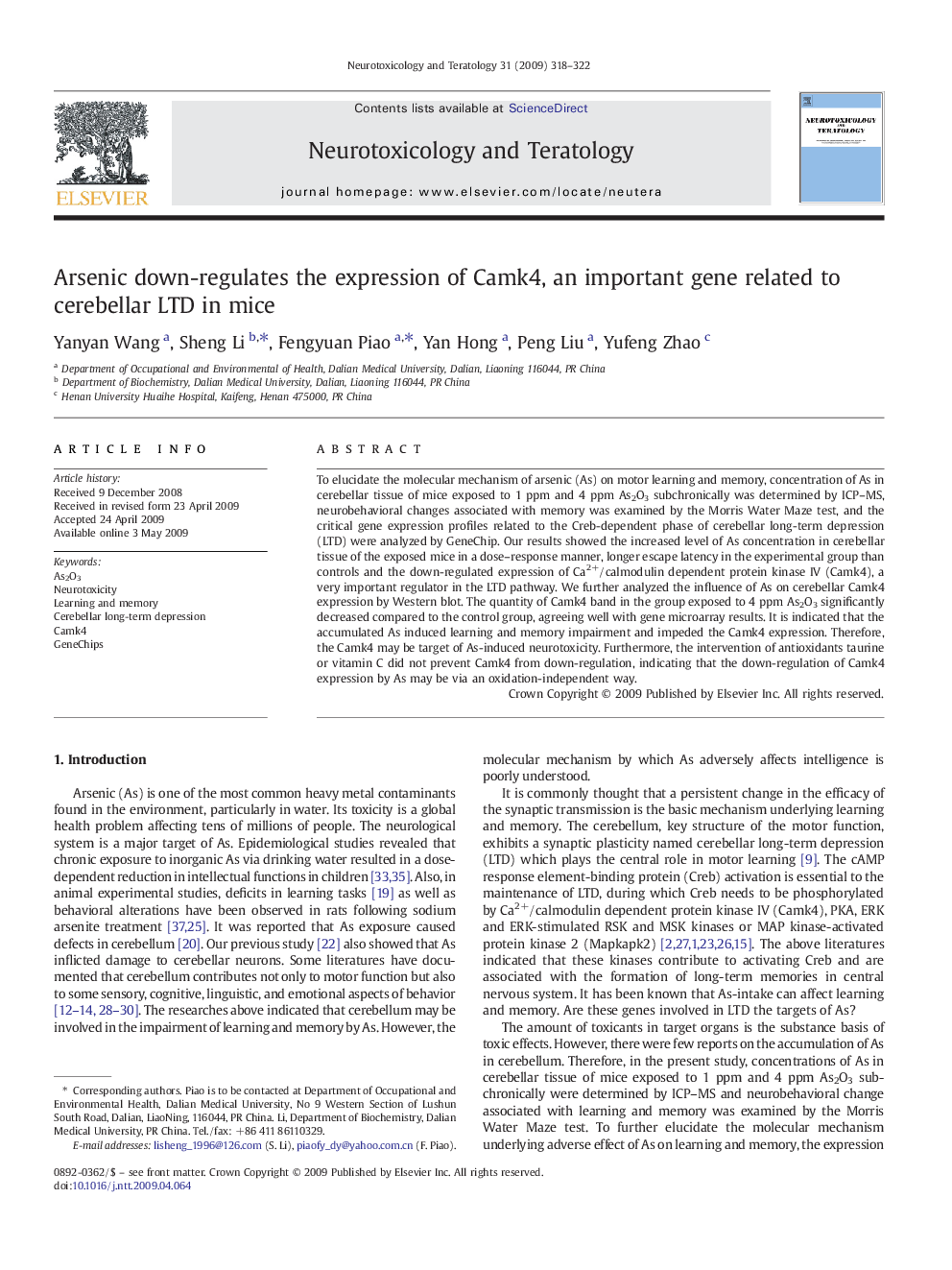| Article ID | Journal | Published Year | Pages | File Type |
|---|---|---|---|---|
| 2591912 | Neurotoxicology and Teratology | 2009 | 5 Pages |
To elucidate the molecular mechanism of arsenic (As) on motor learning and memory, concentration of As in cerebellar tissue of mice exposed to 1 ppm and 4 ppm As2O3 subchronically was determined by ICP–MS, neurobehavioral changes associated with memory was examined by the Morris Water Maze test, and the critical gene expression profiles related to the Creb-dependent phase of cerebellar long-term depression (LTD) were analyzed by GeneChip. Our results showed the increased level of As concentration in cerebellar tissue of the exposed mice in a dose–response manner, longer escape latency in the experimental group than controls and the down-regulated expression of Ca2+/calmodulin dependent protein kinase IV (Camk4), a very important regulator in the LTD pathway. We further analyzed the influence of As on cerebellar Camk4 expression by Western blot. The quantity of Camk4 band in the group exposed to 4 ppm As2O3 significantly decreased compared to the control group, agreeing well with gene microarray results. It is indicated that the accumulated As induced learning and memory impairment and impeded the Camk4 expression. Therefore, the Camk4 may be target of As-induced neurotoxicity. Furthermore, the intervention of antioxidants taurine or vitamin C did not prevent Camk4 from down-regulation, indicating that the down-regulation of Camk4 expression by As may be via an oxidation-independent way.
